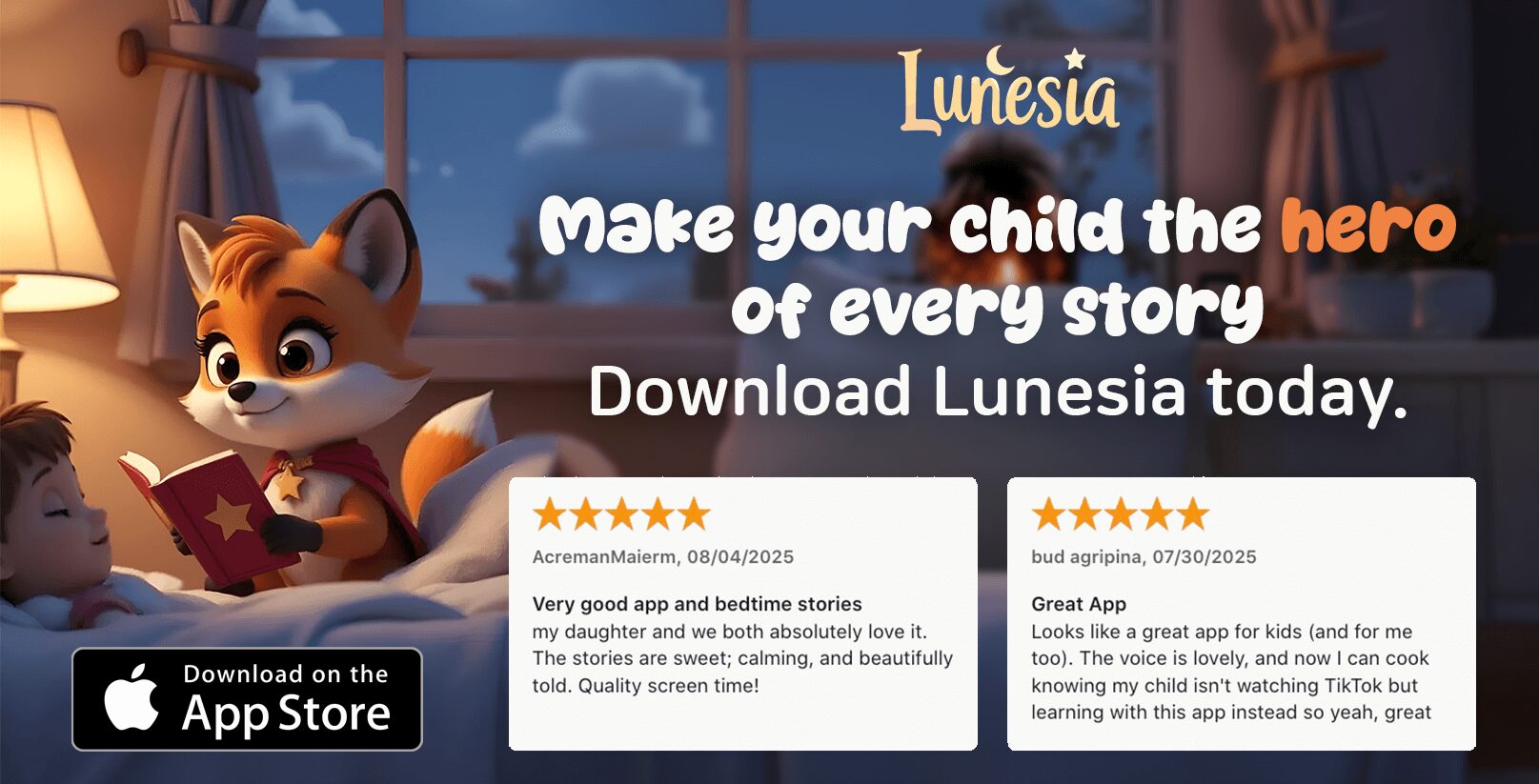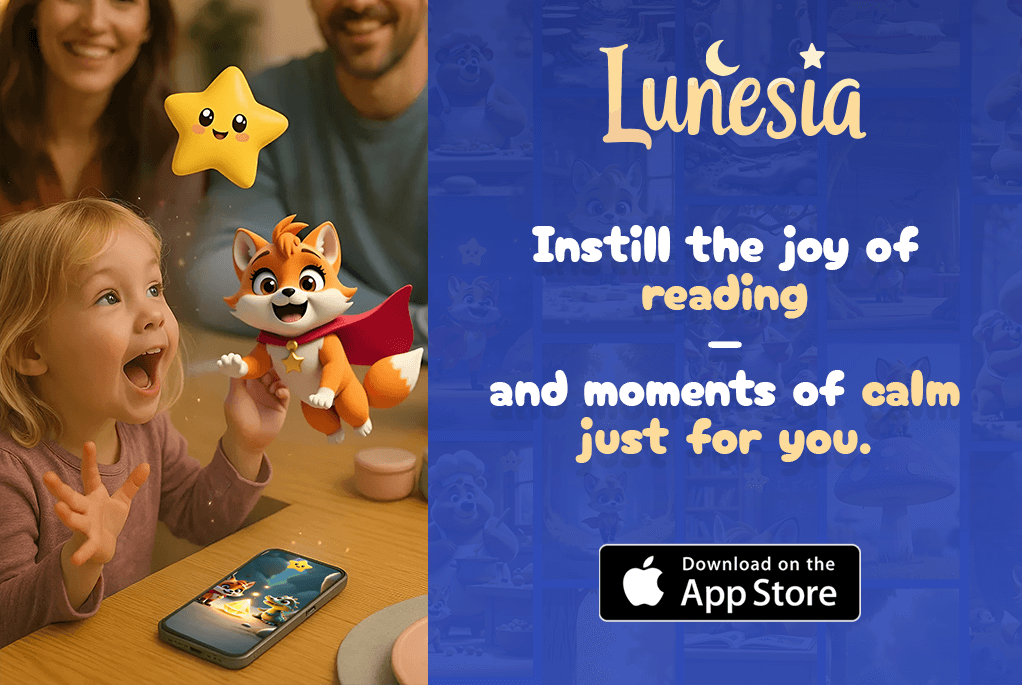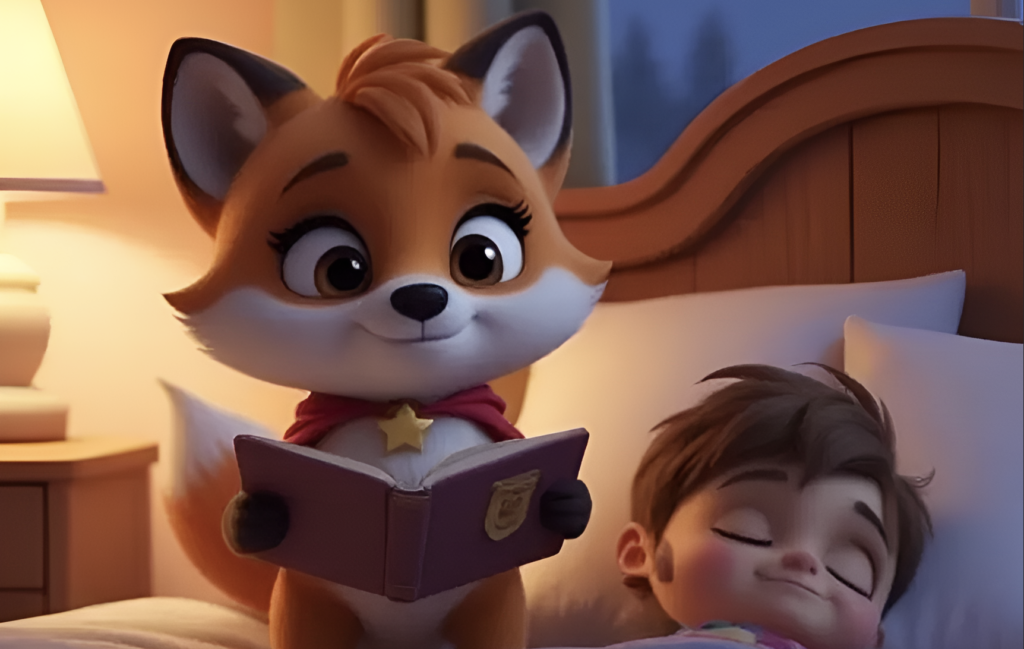As a parent and educator, I’ve watched with fascination and concern as AI tools like ChatGPT and Jasper start creating children’s books. The debate between human creativity and artificial intelligence in storytelling isn’t just academic—it directly impacts how our children learn and develop their imagination.
While AI can quickly produce content that follows basic patterns, I’ve observed that children connect more deeply with narratives created by human authors who understand emotional nuances. Lunesia’s approach to storytelling demonstrates why human creativity still matters in a world increasingly dominated by artificial intelligence.
In this article, I’ll share my insights on how human experience differs from AI-generated content, why these differences matter for children’s learning, and what the future might hold for storytelling in education.
The Rise of AI-Generated Children’s Content
The rise of AI-generated children’s content is transforming the publishing industry in ways both subtle and profound. As a parent and a professional in the field, I’m fascinated by the rapid advancements in artificial intelligence and its growing role in creating stories for children.
Creating Children’s Stories with AI
AI tools can now generate children’s books by suggesting ideas and writing stories that can be modified to appear as if they were written by humans. This process involves using AI to generate story ideas, write initial drafts, check these drafts against AI detectors to ensure they aren’t flagged as machine-generated, and then refine them further to pass plagiarism checks. Finally, AI-powered tools like Midjourney can be used to create artwork that complements the narrative.
The technology behind AI story generation has advanced significantly, allowing for the creation of complete children’s books from concept to illustration in a matter of hours, a stark contrast to the months or even years traditional publishing can take. By analyzing patterns in existing literature, AI systems can generate narratives that follow familiar structures and themes, making them appealing to their target audience.
The Appeal to Publishers
Publishers are drawn to AI-generated content because it offers substantial cost savings. There’s no need to pay human authors or illustrators, and content can be produced at scale and on demand. The business model is compelling: AI tools can generate dozens of children’s books in the time it takes a human author to craft a single story, enabling publishers to flood the market with a wide range of content at competitive prices.
As noted by industry experts, “The use of AI in content creation is not just about efficiency; it’s about opening up new possibilities for storytelling and reaching wider audiences.” This shift is changing the way we think about content creation in the digital age, making it more accessible and diverse.
What Makes Human-Crafted Stories Unique
When it comes to storytelling for children, human writers bring a level of authenticity that’s hard to replicate with AI alone. As a parent or educator, you’re likely looking for stories that not only captivate young minds but also nurture their emotional and cognitive development.
Emotional Intelligence and Authentic Experiences
Human storytellers draw from their own experiences, memories, and emotions to craft stories that resonate with children. This emotional intelligence is something that AI systems, despite their advanced capabilities, cannot truly replicate. Human-crafted stories are infused with a depth and nuance that comes from lived experience, making them more relatable and engaging for young readers.
For instance, human authors can intuitively sense when to challenge young readers and when to offer comfort, striking a delicate balance that fosters emotional growth. This ability to understand and respond to the emotional needs of children is a hallmark of effective storytelling.

Lunesia’s Approach to Storytelling
Lunesia’s approach to storytelling is a great example of how human-crafted stories can be both engaging and emotionally resonant. By incorporating feedback from actual children, Lunesia creates an iterative process where stories evolve based on genuine emotional responses. This approach ensures that the stories are not only entertaining but also tailored to the needs and sensitivities of young readers.
The Creative Process Behind Human Stories
The creative process behind human stories is inherently messy and beautiful, involving false starts, personal revelations, and unexpected moments of inspiration. This process produces work that is rich in depth and resonance, qualities that are essential for effective storytelling. Human storytellers bring their unique worldview, experiences, and cultural context to their work, making each story a reflection of their individual perspective.
| Aspect | Human-Crafted Stories | AI-Generated Stories |
|---|---|---|
| Emotional Intelligence | High – Draws from human experiences and emotions | Limited – Lacks personal experiences |
| Authenticity | High – Reflects the author’s unique perspective | Low – Based on patterns and algorithms |
| Creative Process | Dynamic – Involves personal revelations and inspiration | Mechanical – Based on data processing |
As we’ve seen, human-crafted stories offer a unique blend of emotional intelligence, authenticity, and creativity that is hard to match with AI-generated content alone. By choosing stories crafted by humans, you’re giving children the gift of a richer, more nuanced storytelling experience.
Human-Crafted Stories vs AI Kids: Learning Outcomes Compared
As we explore the landscape of children’s literature, a critical question emerges: how do human-crafted stories compare to AI-generated content in terms of learning outcomes? The difference between these two types of content is not just about technology; it’s about the quality of the experience they offer to children.
How Children Connect with Different Story Types
Children instinctively connect with authentic emotional experiences in stories. Human-crafted narratives typically generate more meaningful discussions, questions, and personal connections than their AI counterparts. Through my work with children, I’ve observed firsthand how differently they respond to human-crafted stories versus AI-generated content. Their engagement and emotional responses tell a compelling story about learning outcomes.
Cognitive and Emotional Development Benefits
When comparing cognitive development benefits, human-crafted stories tend to introduce nuance and moral complexity in ways that challenge children’s thinking. AI stories often rely on more simplistic patterns and resolutions. The emotional development fostered by human-crafted stories is particularly significant, helping children process complex feelings and situations through authentic emotional journeys. For more insights on the impact of reading on students, you can explore the effects of different types of content on young.
A Tale of Two Texts: Comparing Examples
Let’s consider a comparison between AI-generated texts and human-crafted stories about Hurricane Katrina. While the AI-generated informational text was effective, the narrative story lacked emotional depth and authenticity. This gap in quality is evident when comparing examples of children’s literature. Human authors intuitively understand the pacing, tension, and resolution that children need at different developmental stages.
| Content Type | Emotional Depth | Cognitive Challenge |
|---|---|---|
| Human-Crafted Stories | High | High |
| AI-Generated Content | Low | Low |
Quality human-crafted stories stay with children over time, becoming part of their emotional and intellectual framework. In contrast, AI-generated content tends to be more forgettable despite being technically correct. The things that make stories powerful learning tools—emotional resonance, cultural authenticity, moral complexity—are precisely the elements where human authors consistently outperform AI in creating content for children.
The Future of Children’s Storytelling
The future of children’s storytelling is not about humans versus machines, but about how these two can work together to create something better. As we move forward, I envision a world where AI and human creativity complement each other, with AI handling routine tasks like research and grammar checking, and humans focusing on the emotional core of stories.
This collaboration will lead to more sophisticated storytelling tools, but it will also increase the value and appreciation for quality human-crafted narratives. Parents and educators will need to become more discerning about the stories they share with children, understanding that the source and creation process of content matters for developmental outcomes.
In this future, human authors will likely use AI as assistive tools for idea generation and even first drafts, but the emotional intelligence, creativity, and authentic experiences that make stories resonate will remain uniquely human. The business of children’s publishing will transform, with mass-market content becoming AI-generated, while premium human-crafted stories command higher value for their unique qualities.
As we navigate this evolving landscape, it’s clear that children need stories that speak to their hearts and minds, helping them process emotions, understand others, and imagine new possibilities. Whether these stories come from humans, AI, or a combination of both, the quality of the stories we share with our children will always matter more than how efficiently they were produced.
For instance, platforms like Lunesia are already exploring the potential of human-crafted stories for children, demonstrating how technology can be harnessed to support human creativity in storytelling.
In conclusion, the future of children’s storytelling will be shaped by the synergy between human imagination and artificial intelligence, leading to new and innovative ways to engage children. By embracing this collaboration, we can ensure that the stories of tomorrow are not only entertaining but also enriching for young minds.
FAQ
What makes human-crafted stories more effective for children’s learning?
Human-crafted stories, like those from Lunesia, offer emotional intelligence and authentic experiences that help children connect on a deeper level, fostering better cognitive and emotional development.
How do children’s stories impact their emotional development?
Stories with relatable characters and experiences help children understand and manage their emotions, developing essential life skills like empathy and self-awareness.
Can artificial intelligence truly create engaging stories for children?
While AI can generate content, it often lacks the creativity and emotional depth that human storytellers bring to the table, making it less engaging for young readers.
What role does imagination play in children’s learning and development?
Imagination is crucial for children’s cognitive development, as it enables them to explore new ideas, think creatively, and develop problem-solving skills through engaging storytelling.
How can parents choose the best content for their children’s educational needs?
Parents should look for content that is not only informative but also engaging and emotionally resonant, such as human-crafted stories that promote healthy development and creativity.
What is the significance of emotional intelligence in children’s development?
Emotional intelligence is vital for children’s social and emotional development, helping them navigate complex emotions, build strong relationships, and achieve academic success.
How do storytelling and imagination intersect in children’s learning?
Storytelling sparks imagination, allowing children to explore new worlds, characters, and experiences that foster creative thinking and emotional intelligence.




